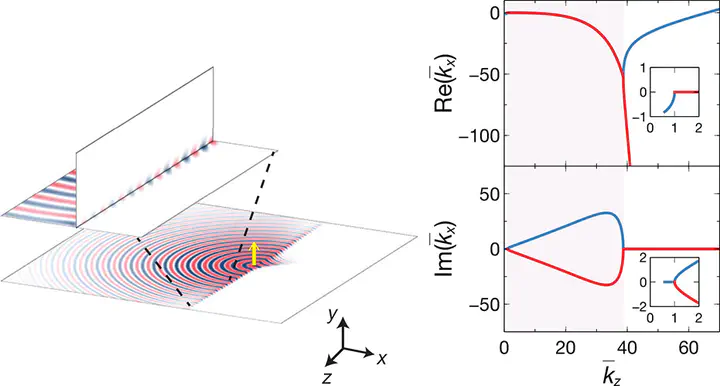
Abstract
Time-harmonic electromagnetic plane waves in anisotropic media can exhibit complex-valued wavevectors (with nonzero real and imaginary parts) even in the absence of material dissipation. These peculiar modes, usually referred to as “ghost waves”, hybridize the typical traits of conventional propagating and evanescent waves, displaying both phase accumulation and purely reactive exponential decay away from the direction of the power flow. Their existence has been predicted in several scenarios and has been recently observed experimentally in the form of surface phonon polaritons with complex-valued out-of-plane wavevectors propagating at the interface between air and a natural uniaxial crystal with slanted optical axis. Here, we demonstrate that ghost waves can arise also in lower-dimensional flat-optics scenarios, which are becoming increasingly relevant in the context of metasurfaces and in the field of polaritonics. Specifically, we show that planar junctions between isotropic and anisotropic metasurfaces can support “ghost line waves” that propagate unattenuated along the line interface, exhibiting phase oscillations combined with evanescent decay both in the plane of the metasurface (away from the interface) and out-of-plane in the surrounding medium. Our theoretical results, validated by finite-element numerical simulations, demonstrate a novel form of polaritonic waves with highly confined features, which may provide new opportunities for the control of light at the nanoscale and may find potential applications in a variety of scenarios, including integrated waveguides, nonlinear optics, optical sensing, and subdiffraction imaging.